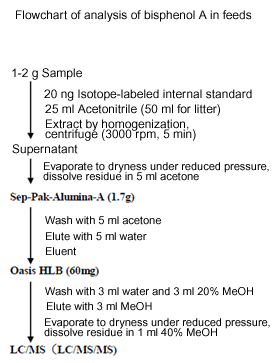| |
|
|
 |
|
Advisory Committee on Health Effects of Endocrine Disruptors
The Supplement II to the Intermediary Report
1.2.4.2 |
| |
contents
Detailed contents
<< prev
next >> |
| |
[Trends in BPA analysis]
The HPLC with the UV or fluorescent detector has generally been
used for tests of BPA-containing polycarbonate utensils and
determination of BPA released from them. Analysis of BPA in
blood, urine and other biological samples, however, need a
method of far higher sensitivity, selectivity and reliability
due to BPA concentrations far lower than in plastics. Recent
reports on BPA in biological samples generally use the GC/MS or
LC/MS(/MS). Capillary columns used in GC have high resolution.
The GC/CS with negative CI, with its high sensitivity and
selectivity, has been adopted in several studies for BPA
analysis in biological samples. BPA should, however, be
derivatized to prevent its phenol groups from being adsorbed to
the column and causing tailing of the peak. The LC/MS, on the
other hand, needs no derivatization and has high sensitivity and
selectivity. It is therefore the most popular method for
analysis of BPA in biological samples.

|
|
contents
Detailed contents
<< prev
next >> |
|
|
|
